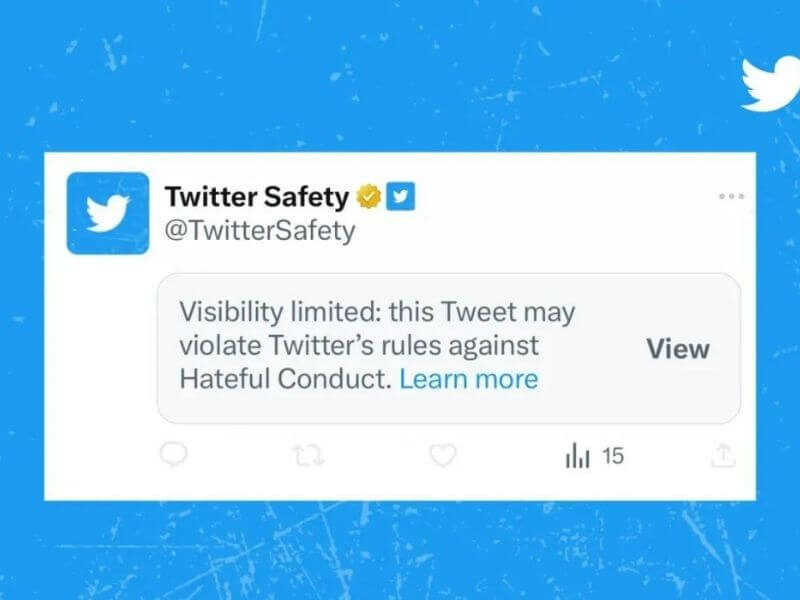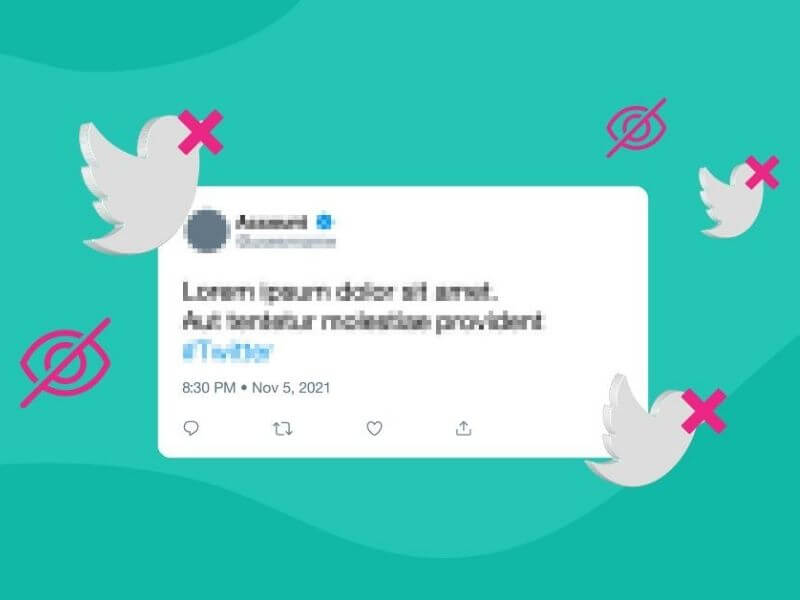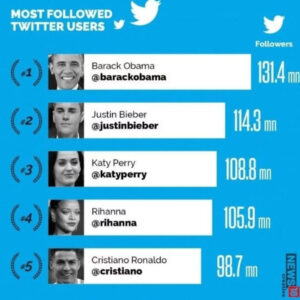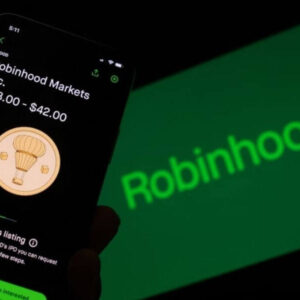What is Shadow Banned on Twitter? ‘Shadowban’: a term used by everyone from influencers to conspiracy theorists — and it’s enough to strike fear into the hearts of many a social media manager or content creator.
While the practice has developed an almost mythical status in social media marketing, it’s a pretty straightforward concept. And thankfully, relatively easy to avoid.
Let’s unpack everything you need to know about shadowbans: What’s actually behind the mysterious term, its history, how it has reared its head on certain platforms, and — most importantly — how to prevent it from happening to you.

What is Shadow Banned on Twitter?
Shadowbanning is the act of muting a user or their content on a platform without informing them.
While the term shadowban is pretty new, the practice of hiding participants online without telling them long predates it. Over the years, it’s had many names: stealth banning, hellbanning, ghost banning, being “sent to coventry,” comment ghosting, and my particular favorite: toading.
While it may seem sinister, it’s pretty practical when you consider it from a moderator’s point of view. After all, when you remove trolls from an online platform and let them know, there’s nothing to stop them from creating another account and starting right back up with the behavior that got them banned in the first place. But if you quietly mute their rule-breaking content, said trolls are free to shout into the void without harming other users.
Still, the idea that your content can be throttled by a platform is rather unpleasant — and the fact that you could have no clue that it’s happening makes it even worse, Jonathan Zittrain, a professor of computer science and law at Harvard University, told the New York Times.
“Shadowbanning is the worry by any user that they are howling into the void, that they have been placed in a bubble and it’s undisclosed.”
A brief history of shadowbanning
Forgive this nerd for taking a quick meander into the archives — the history of the term shadowban is just too interesting not to feature in this article.
As I mentioned earlier, the term itself is not that new: The New York Times reckons ‘shadowban’ dates back to at least 2012 when Reddit users accused the platform of banning a link to a Gawker article about transparency.
VICE disagrees, attributing the origin of shadowbanning to the controversial comedy website Something Awful (SA), a sprawling collection of blogs, message boards, and forums. This wouldn’t be surprising, given SA, which has been around since 1999, is credited with the creation of many Internet terms, including ‘spoiler alert,’ ‘let’s play,’ and ‘AMA’ (Ask Me Anything).
Toading was the act of metaphorically turning someone into a ‘toad’ as a punitive measure
click to share
The practice of shadowbanning is another story. VICE traces the concept all the way back to the practice of ‘toading,’ which has been around — I kid you not — since the 70s. This was on multi-user domains (MUDs), text-based chat rooms that allowed players to take part in Dungeons and Dragon-esque games.
Toading was “the act of metaphorically turning someone into a ‘toad’ as a punitive measure,” early internet anthropologist Claire Evans told the outlet, which effectively made them invisible to other players.
I could go deep on how the practice has popped up across forums, message boards, online games, and other platforms over the years, but you get the gist: shadowbanning has long been a tool in the moderators’ toolbox.
Let’s fast-forward to today: shadowbanning has made regular appearances in the news over the past few years, largely thanks to several influential figures including politicians who have accused various social networks of shadowbanning their content.
Elon Musk has also raised the issue since his acquisition of Twitter (X). He recently shared what appeared to be evidence of shadowbanning at Twitter before his time — only to be accused of this himself weeks later, in December 2022.
@ElonJet, an account run by a student who tracked the whereabouts of Musk’s private plane, claimed that he learned from Twitter employees that the account had been shadowbanned. Soon after, the account was officially suspended.
YouTube, too, has been under fire for shadowbanning. Perhaps most prominently, users complained they were unable to find PewDiePie (one of the platform’s biggest creators, who has an eye-watering 111 million subscribers) in search results and accused YouTube of shadowbanning him. The video-sharing platform vehemently denied this, flagging slower content moderation due to Covid-19 as a possible reason.

Shadowbanning on social media
While the idea of shadowbanning has become pretty political, most creators and social media managers likely won’t have their accounts singled out in the way that, say, ElonJet, was.
And yet, pleas from influencers who feel their content has been throttled are pretty common. In situations like these — where the creator knows they haven’t explicitly broken any rules — the shadowban has become something of a social media bogeyman.
When I see posts, Stories, or tweets like these, I often get the impression that the influencer believes that a) they’re being directly targeted by the platform for stepping on proverbial toes; b) they’ve crossed some mysterious, murky line that the platform has not been explicit about; or c) they’re a victim of some algorithmic bug.
Is any of that possible? Let’s take a closer look.
Do social media platforms really shadowban accounts?
Facebook, Instagram, Twitter, YouTube, and TikTok are the platforms that regularly come under fire for shadowbanning — but is it real?
This is where things get a little complicated.
Most social platforms deny that they shadowban users. But all of them have pretty hefty community guidelines or content rules, which, if ignored, could result in bans and content not being featured in important places of discovery for followers, like Instagram’s Explore page or TikTok’s For You feed.
In a nutshell: if you break these rules, your content could be downranked or disappear from feeds entirely. Will you always be alerted if this happens? Well, no. On the surface, this does seem a lot like shadowbanning.
But (and this is a big but) the guidelines are largely pretty clear-cut. It’s in the platform’s best interest to protect its users from things like harmful content — and to make sure their creators keep making high-quality content.
“Contrary to what you might have heard, it’s in our interest as a business to ensure that creators are able to reach their audiences and get discovered so they can continue to grow and thrive on Instagram,” Head of Instagram Adam Mosseri wrote in a 2023 update.
“If there is an audience that is interested in what you share, then the more effectively we help that audience see your content, the more they will use our platform.”
And the good news is that most platforms seem to have heard creators’ concerns — many of them are making an effort to make sure their decisions to flag or downrank content are transparent.
Here are the platform specifics.

Above is information about What is Shadow Banned on Twitter? What is this Twitter? that we have compiled. Hopefully, through the above content, you have a more detailed understanding of Shadow Banned on Twitter. Thank you for reading our post.









